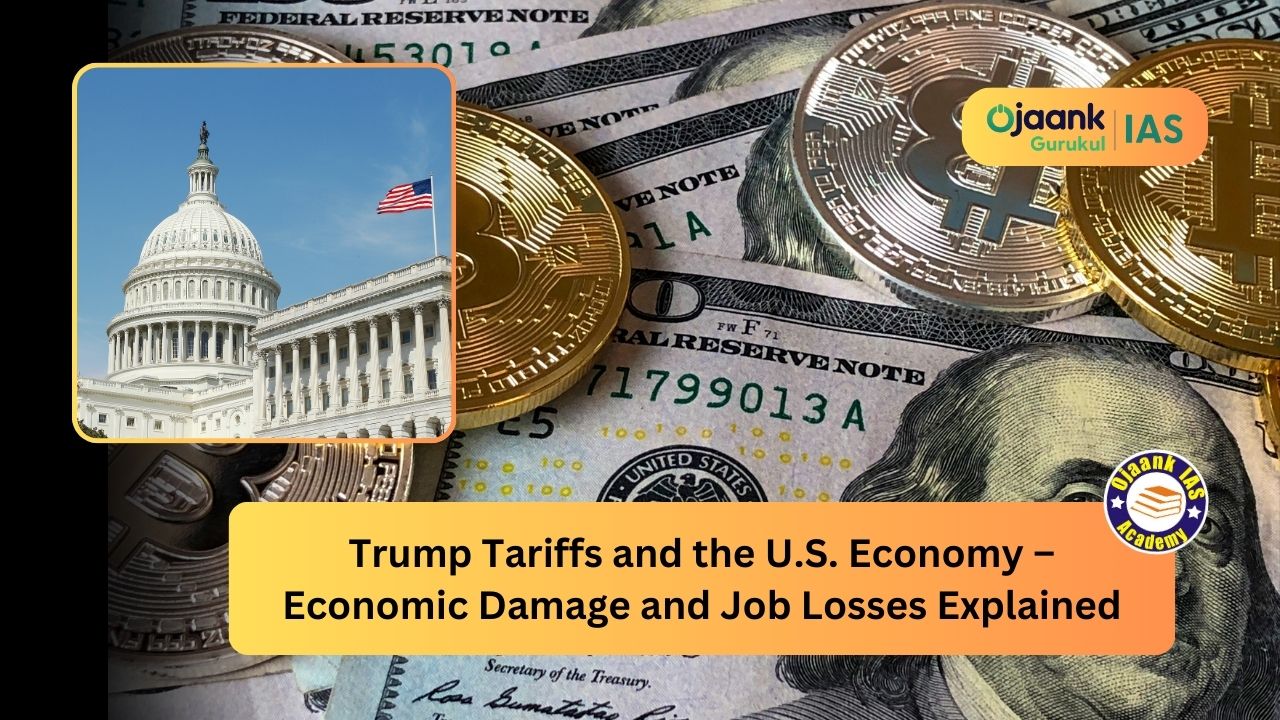Trump Tariffs and the U.S. Economy – Economic Damage and Job Losses Explained

Introduction: The Economic Impact of Protectionism
Former U.S. President Donald Trump’s tariffs on imported goods have proven to be a double-edged sword for the American economy. While intended to protect domestic industries, data suggests that these policies have had negative consequences, including GDP decline, household income reduction, and job losses in key sectors such as manufacturing.
According to economic expert reports, Trump’s proposed second-term tariffs seem poised to repeat history. A closer look at economic analyses reveals the real cost of these policies.
The Real Cost of Trump’s Tariffs: Economic Damage Unveiled
1. Job Losses in the Manufacturing Sector
A 2019 discussion paper by the Federal Reserve Board, Disentangling the Effects of the 2018-2019 Tariffs on a Globally Connected U.S. Manufacturing Sector, analyzed the impact of Trump’s first-term tariffs on nearly $400 billion worth of goods.
The study found that industries exposed to tariff hikes experienced job losses. Approximately 75,000 manufacturing jobs were lost, marking a 0.6% decline compared to a scenario without tariffs.
2. GDP Contraction and Household Income Reduction
According to a 2019 report by the Congressional Budget Office (CBO), An Update to the Budget and Economic Outlook: 2019 to 2029, Trump’s trade barriers reduced overall U.S. economic output.
- By 2020, real GDP saw a 0.3% decline.
- In 2019, the average real household income dropped by $580 (in 2019 dollars).
The 25% Steel Tariff: A Repeat of 2018?
In March 2018, Trump imposed a 25% tariff on steel imports, one of his most controversial protectionist measures. While this policy aimed to boost domestic production, it ultimately increased production costs.
According to trade experts, exemptions granted to Canada, Mexico, and the European Union were later revoked, leading to retaliatory tariffs and greater economic uncertainty.
If Trump reinstates similar tariffs in a second term, industries reliant on steel—including automotive, construction, and energy—could face higher production costs.
China’s Role and Global Market Implications
In 2023, China produced 1,019 million metric tons of steel, accounting for 54% of global production.
According to international trade data:
- India followed with 140.8 million metric tons (7%)
- The U.S. accounted for just 4% of global production.
Given this disparity, American steel manufacturers remain vulnerable to international price pressures. New tariffs are unlikely to curb foreign dominance but will disproportionately hurt U.S. industries that rely on affordable raw materials.
The Inflation Connection: Tariffs and Rising Costs
Economic analysts have highlighted how tariffs contributed to rising production costs, fueling inflation.
In recent years, U.S. inflation rates have reached record highs. While the policy analysis shows that the Biden administration has maintained some trade restrictions, experts argue that Trump’s tariffs were a key driver of inflation, increasing costs for both businesses and consumers.
Conclusion: A Self-Inflicted Wound on the Economy
If history serves as a lesson, Trump’s aggressive tariffs could further damage the U.S. economy. Reports from economic experts clearly show:
✅ Job losses in manufacturing
✅ GDP contraction
✅ Household income reduction
✅ Rising inflation
If these policies are reinstated, the U.S. may face another period of economic distress.
Frequently Asked Questions (FAQ)
1. How do Trump’s tariffs impact the U.S. economy?
Tariffs increase the cost of imported goods, raising expenses for businesses and leading to higher consumer prices.
2. Do tariffs affect jobs?
Yes, several industries have experienced job cuts, especially in the manufacturing sector.
3. What was the impact of the 2018 steel tariffs?
They increased steel costs, raising production expenses for American companies and negatively impacting some industries.
4. Will tariffs be reintroduced if Trump wins a second term?
It is not confirmed yet, but based on his previous statements, it is likely.
5. How do tariffs contribute to inflation?
They make imported goods more expensive, increasing overall production costs and putting financial strain on consumers.
6. Were tariffs on China effective?
Many economists believe they hurt U.S. businesses and consumers more than they impacted China.
7. Can tariffs benefit the U.S. economy?
In some cases, they may help domestic industries, but overall, their economic impact has been largely negative.
Copyright 2022 power by Ojaank Ias





